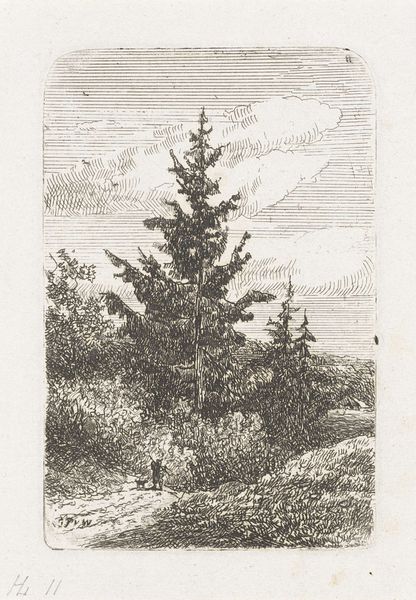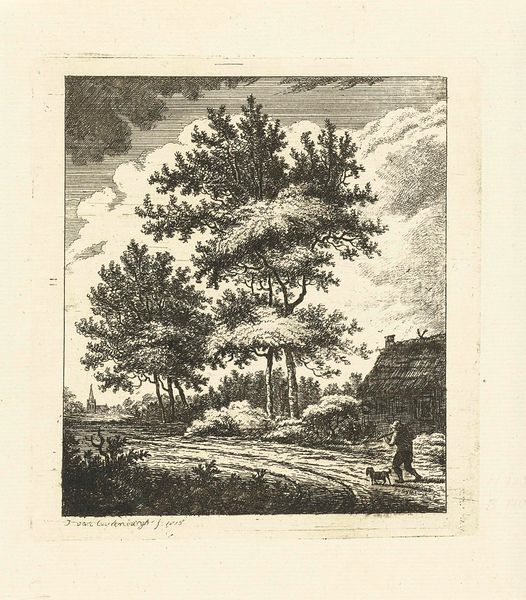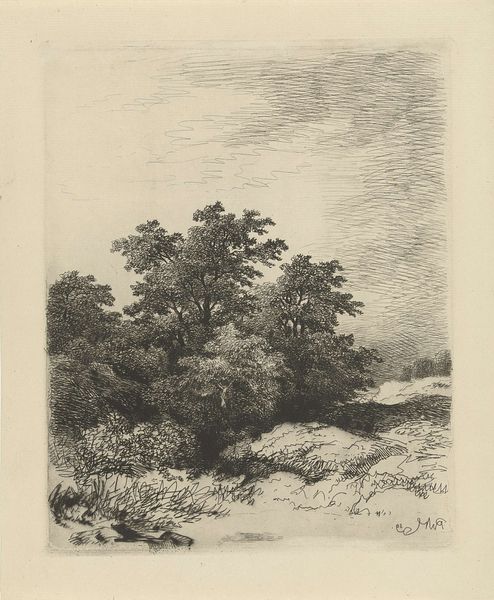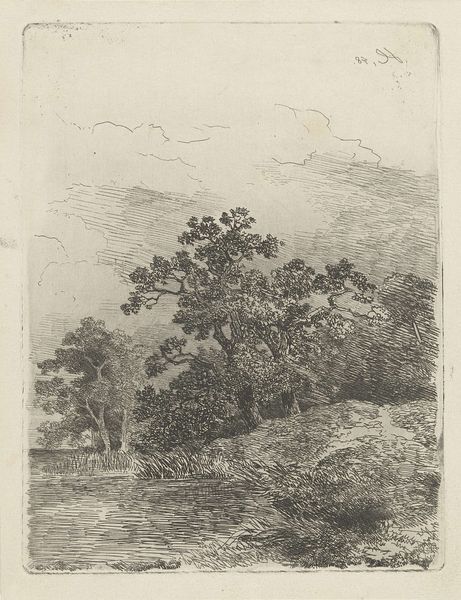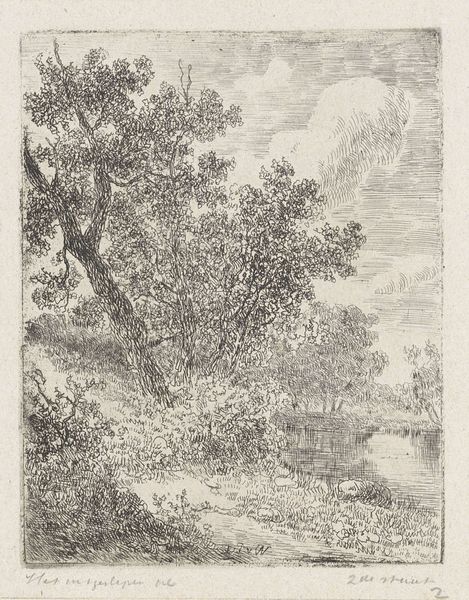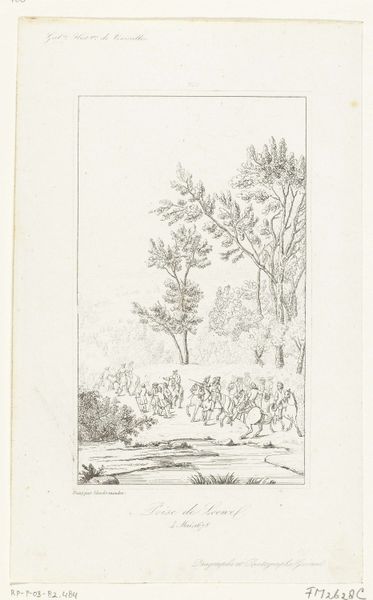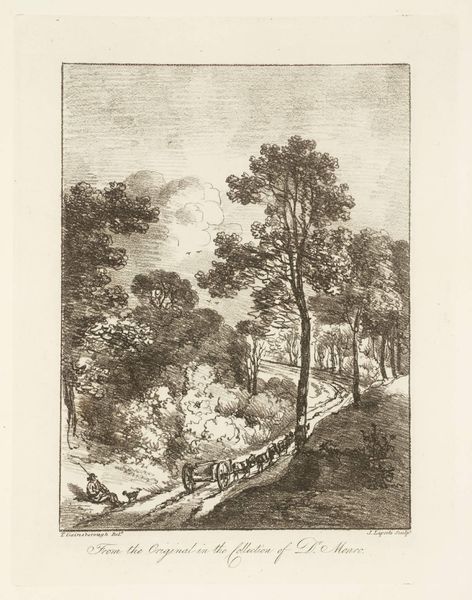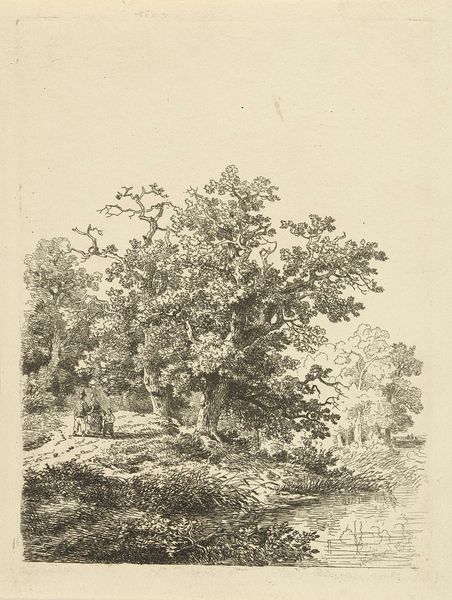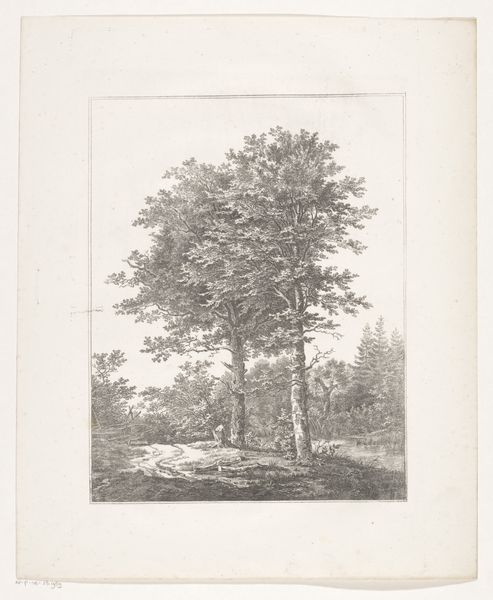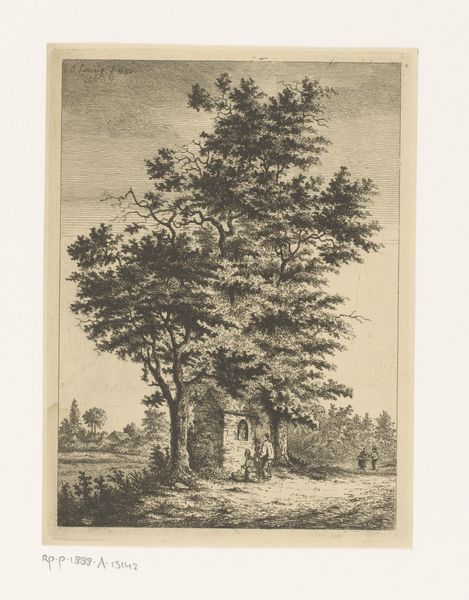
etching
#
etching
#
landscape
#
etching
#
line
#
realism
Dimensions: height 123 mm, width 91 mm
Copyright: Rijks Museum: Open Domain
Editor: Here we have "Landscape with a Spruce" by Johannes Pieter van Wisselingh, an etching created sometime between 1830 and 1878, currently housed in the Rijksmuseum. The delicate lines give it a rather contemplative, almost melancholic mood. What social narratives might be layered into this quiet scene? Curator: That's a great starting point. I see this etching as deeply entwined with 19th-century Romanticism and its complicated relationship with nature. What was considered 'nature' during this time? Was it equally accessible to all, or was it filtered through class and gendered expectations? This seemingly peaceful landscape masks underlying power dynamics. Who is able to enjoy such scenes, and under what conditions? Editor: So, the presence of this grand spruce might symbolize more than just a tree? Curator: Precisely. Think about the rise of industrialization during this period. Landscapes like this became idealized refuges, but also resources to be exploited. The image could represent both longing for and a sense of loss regarding nature. The very act of etching, a meticulous process, hints at the transformation of the natural world into something commodified, to be consumed visually. Consider, too, the identity of the artist; were they among those exploiting nature, or admiring its original beauty? Editor: I didn't consider the class element so directly related to our modern ecological concerns. Curator: Indeed. Art doesn't exist in a vacuum. By analyzing visual representations through the lens of power and privilege, we uncover its complicated layers of meaning. It allows us to discuss its context in relation to today's concerns about class, gender, and race equity in a more intersectional framework. Editor: It definitely sheds light on the choices artists made and why they chose certain scenes or landscapes to represent. Curator: Exactly. This quiet image becomes quite a potent document when read with a critical eye!
Comments
No comments
Be the first to comment and join the conversation on the ultimate creative platform.
